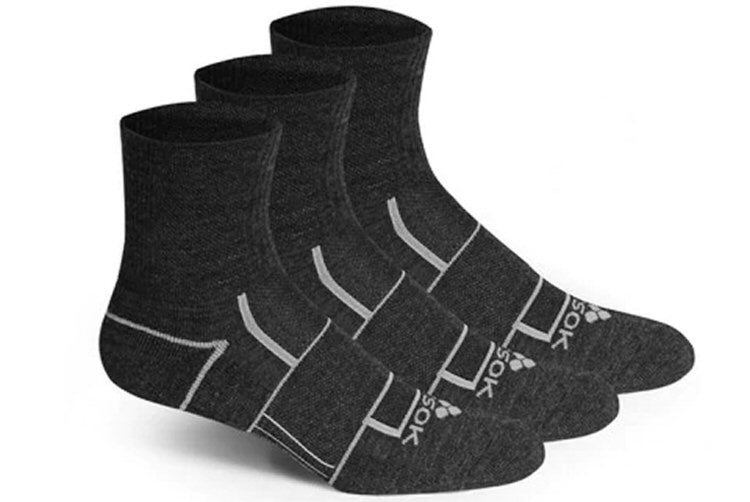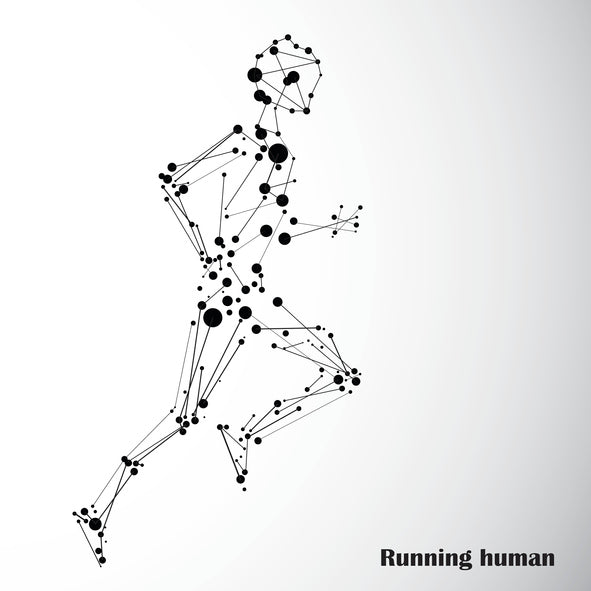We've touched on having the proper running form to briefly get the most out of your run. But what, exactly, can you do to improve it? Are there any tips or tricks for a proper running form?
Proper running reduces the chance of injury, increases your speed, and boosts your efficiency. Your running form is critical for many health benefits, enabling you to run longer distances with less pain and discomfort.
If you're new to running or just getting back into it and need a refresher, don't worry! We've got you.
The Proper Form
The proper form for running can be broken down and simplified into the following steps:
1. Lean slightly forward.
2. Look ahead, don't tilt your head down or round your shoulders.
3. Keep shoulder blades neutral
4. Keep arms relaxed and elbows bent at 90 degrees
5. Stabilize and engage your core
6. Lift and flex your knee
7. Push off the back leg
No runner is precisely the same. Our running form depend on our unique body structure, strengths, and weaknesses. The above is a general outline that you should work toward.
1. Practice Good Running Posture
Many of us work full-time jobs that require being seated or at a computer, and we may be experiencing kyphosis: a forward-head posture with a rounded upper back and shoulders. Undoubtedly, many of us are working to keep a better posture when sitting or standing, and maintaining a good posture when running is just as important.
Practicing better posture will help you improve your running form. But how do you find it?
• Stand up straight and tall. Imagine a straight line from the top of your head while lengthening your neck.
• Keep your shoulders back.
• Engage your core by pulling your stomach gently inward. This will activate your core stabilizers, such as abs and back muscles, to increase the efficient form transfer from limbs to the ground. Consider practicing core exercises when not running to help strengthen these muscles.
• Resist the urge to lower your head or look at your feet. Keep your head straight, chin up, and gaze forward.
• When you begin to run, lean slightly forward into it. Tilt your body a little to create more power when pushing off the ground to help you find a stronger sense of balance. Try and tilt with your hips and ankles, not your back.
2. Your Arms are Important Too
You might think running is all about your legs, but arms are just as crucial to running and proper running form. You're making running even more challenging if you run with your arms hanging straight or crossed in front of you.
When your right foot goes forward, your left arm and shoulder should also swing forward. Using your arms balances your body while the legs move, and elbows make up for much kinetic energy. Your arms should swing back and forth, and your elbows should be roughly 90 degrees. Relax your hands, and don't clench them. Try and let your arms swing naturally without tensing them or your shoulders. A stiff upper body can cause unnecessary rotation in your legs. Feel free to practice arm movement in a mirror to find the correct pattern.
3. Stop The Heel Strike
The patterns we make when we walk are not the same as when we run. When we walk, we lead the step with the lower leg and foot, making ground contact first with our heel and keeping the knee extended. If your running pattern is the same as walking—landing with a heel strike—you are most likely going to overstride.
When you overstride, you're braking against your forward momentum, making running far more complicated and causing a heavier joint impact. To avoid overstriding, aim to hit the ground in the middle of your sole or the ball of the foot to avoid excessive heel striking.
4. Relax
When you're running, you're doing an activity that requires effort, and many times that effort can cause us to tense up. You'll want to aim toward trying to relax when you run, but many of you might be asking: how is that possible when you're exercising?
• Listen to your body and learn what it is telling you. Most runners will eventually realize they tend to carry tension in their upper bodies, such as their arms and shoulders. Do you feel your shoulders creeping up toward your ears? Are your hands clenched? Are you feeling any discomfort or pain? Are you clenching your jaw, or are your eyebrows drawn together? These are all signs of straining and tension. These create excess tension, and when you carry excess tension, you compromise your running form and cause you to slow down.
• Always try and check in with your body during every run. Once you notice the areas of your body that tend to tense up, you'll learn how to relax them.
1. Unclench your jaw, and soften your eyes.
2. Take a deep breath, and exhale forcefully.
3. As you exhale, give your arms a shake.
4. Return arms to normal position, elbows roughly 90 degrees, shoulders down and relaxed, slightly back.
5. Unclench your hands
6. Focus on a smooth stride, not speed.
5. Practice and Patience
The most important tip we can share is to remember that you and your body are unique. Ultimately, finding the ideal form that works for you and your body will take time, effort, attention to your body while you run, and patience. Adjusting your natural gait isn't easy and will take practice. In addition to time, changes to your form can cause short-term side effects like sore muscles and back pain, as you may be engaging muscles that haven't worked as hard. The good news is that your body will adjust as it prefers when you use it more efficiently. Go slow, make little changes, and your running form will feel more natural and comfortable.
Running for the first time or getting back into running can feel clunky and awkward, but with time and these five tips for proper running, you'll find a form ideal for you!







Leave a comment
This site is protected by hCaptcha and the hCaptcha Privacy Policy and Terms of Service apply.